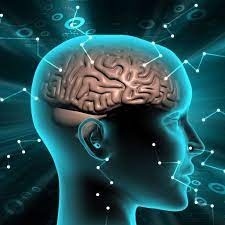The intricate nexus between mental health disorders and substance abuse paves the way for a complex yet critical field within healthcare: dual diagnosis. An individual grappling with both a mental health issue and a substance use disorder may often find themselves facing an array of unique challenges. Understanding this intersection is paramount for medical professionals, patients, and their families. It allows a complete perspective on the concurrent disorders and how they impact an individual’s life. Below, we explore what dual diagnosis entails and the depth of its significance.
Defining Dual Diagnosis: What It Is and Why It Matters
Dual diagnosis, also known as co-occurring disorders, is the term used when an individual is suffering from both a mental health disorder and a substance abuse problem. It is a critical concept in contemporary healthcare because it recognizes the complex interplay between two separate but interlinked areas of wellness. The importance of identifying dual diagnosis lies in its implications for treatment; undiagnosed or untreated, it can severely hamper an individual’s recovery process.
Comprehending the full scope of dual diagnosis is pivotal for determining the root causes that contribute to each condition. It demands an in-depth understanding and tailored interventions that address both the mental illness and the substance use disorder simultaneously. This form of synchronized treatment approach can effectively help individuals work towards a more sustainable recovery than treating each disorder in isolation.
For some people, getting a dual diagnosis in Los Angeles, or your area, understanding, and supporting specialized treatment programs becomes essential. As one of the cities with a noticeably high prevalence of such cases, creating awareness and allocating resources for dual diagnosis treatment is a public health priority.
Strategies for Effective Management of Dual Diagnosis
Effective management of dual diagnosis necessitates an integrated approach that acknowledges the complex interaction between mental health and substance abuse. This starts with comprehensive assessment protocols that do not overlook the possibility of one condition being hidden by the other. Treatment providers must look beyond the presenting issue to identify any underlying co-occurring disorders.
Personalized treatment plans are paramount. They should combine pharmacological strategies with psychotherapeutic techniques, such as cognitive behavioral therapy or contingency management, tailored to manage the symptoms of both the mental illness and the substance use disorder. This dual-targeted therapy can help ensure a more stable recovery.
Supportive services, including case management, peer support groups, and family therapy, also play crucial roles in sustaining long-term recovery. These support systems can offer the solidarity, understanding, and accountability necessary to navigate the difficulties of dual diagnosis. Additionally, developing coping skills and relapse prevention strategies is essential for patients to learn how to manage triggers and stressors without reverting to substance use.
Stigma, Support, and Advocacy in Dual Diagnosis Cases
The stigma associated with both mental illness and substance abuse is amplified in dual diagnosis, often leading to isolation and discrimination. This stigma can deter individuals from seeking help, fearing judgment or misunderstanding from healthcare providers and their communities. It can also affect the quality of care received, as biases may influence how professionals perceive and treat dual-diagnosis patients.
Support for individuals with dual diagnosis must go beyond the clinical setting. Community resources, including support groups, educational programs, and advocacy organizations, play a crucial role in promoting acceptance and understanding. Access to these resources can empower individuals and their families, giving them not only practical tools for managing day-to-day challenges but also a sense of belonging to a community.
Advocacy is essential to effect change at both the systemic and societal levels. Advocates work to push for better policies, funding, and awareness programs that can improve treatment access and quality for those with co-occurring disorders. With an informed and empathetic approach, they aim to disassemble the barriers erected by stigma.
Overall, dual diagnosis presents a nuanced challenge that requires a dedicated, empathetic approach to rectify inequalities in both the healthcare system and societal perceptions. Increasing awareness, fostering integrated treatment models, and investing in supportive resources are instrumental in facilitating a more holistic path to recovery for individuals grappling with co-occurring disorders.

